David Bellis runs Gwulo.com, an online community for anyone interested in Hong Kong’s history. It hosts over 20,000 pages of information, including over 10,000 photographs. This is his third exploration of Warren Swire’s photographs of his periodic visits to Hong Kong. You can follow these links to catch up with the first and the second.
Warren Swire’s third visit was delayed by the First World War. He had joined a territorial army unit in 1907 (the Royal Buckinghamshire Hussars), and so was mobilized with them in 1914. He served in Egypt until 1916, then returned to the UK to work in control of shipping, a fitting use for his skills. By 1919 Swire returned to the commercial world, and was back in Hong Kong to check on the company’s operations. It is worth taking a step back to see the company’s place in Hong Kong, and the 1920 Juror’s list gives us an idea of its significance. Of the 1,546 jurors listed, 132 or roughly 1 in 12 worked for either Taikoo Dockyard & Engineering (TD&E) or the Taikoo Sugar Refinery (TSR).
Taikoo Sugar Refinery
We have seen the Dockyard in photographs from his earlier visits, but this time he also includes photos of the Sugar Refinery. The first image is titled “H.K. TSR Village”, and shows some of the workers’ housing.

Taikoo Sugar Refinery Village, Hong Kong, 1919-1920. Photograph by G. Warren Swire. HPC ref: Sw04-028. © 2007 John Swire & Sons Ltd.
You should be able to see the tram tracks running along King’s Road at the left. If you look closely, you’ll see that Quarry Bay only had a single track service at this time. Just where the tram lines disappear from view there’s a junction and road running off to the left. That is Mount Parker Road.
Swire also took photos of the Sugar Refinery’s recreation club, and the houses for its European staff:
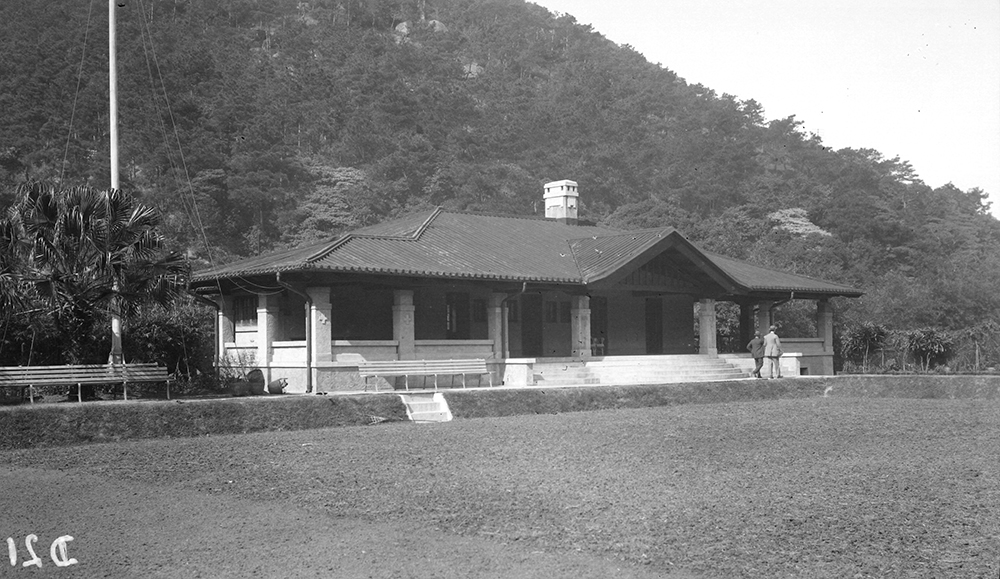
Taikoo Sugar Refinery Recreation Club, Hong Kong, 1919-1920. Photograph by G. Warren Swire. HPC ref: Sw04-029. © 2007 John Swire & Sons Ltd.
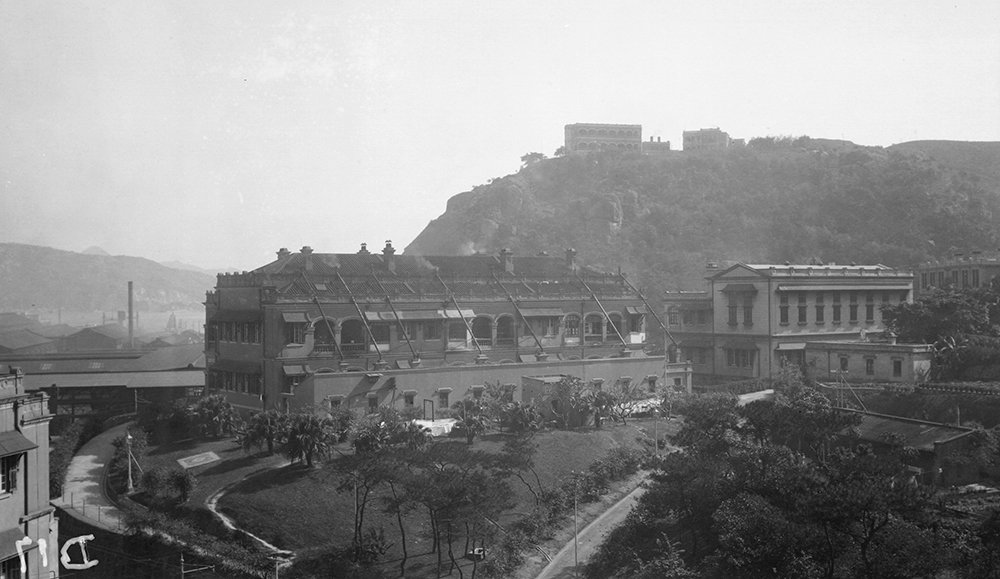
Taikoo Sugar Refinery Foreign Houses, Hong Kong, 1919-1920. Photograph by G. Warren Swire. HPC ref: Sw04-023. © 2007 John Swire & Sons Ltd.
A look down the list of Taikoo Sugar Refinery men on the jurors’ list gives an idea of who lived there. It includes 10 assistants, 3 chemists, a chief engineer, 2 clerks, a draughtsman, 5 engineers, 4 foremen, a manager, 3 pansmen, a storekeeper, 7 sugar boilers, 3 timekeepers and a wharfinger. Most of the titles are self-explanatory, but the “pansman” was a new one to me. It is a skilled job, specific to the sugar refining industry. The pansman operates the vacuum pans that form the sugar crystals from the sugar liquor.
The list also shows three timekeepers from the Sugar Refinery. The Dockyard had seven! In this photo, titled “TD& E. Co Watchmen & Gatehouse”, I think we get a glimpse of the timekeeper’s domain. The row of gates on the right look like the passages where the workers entered and exited the site, clocking in and out each time.

Taikoo Dockyard and Engineering Company Gatehouse, Hong Kong, 1919-1920. Photograph by G. Warren Swire. HPC ref: Sw04-041. © 2007 John Swire & Sons Ltd.
North Point Store
Another building we see for the first time is the company’s North Point Store:
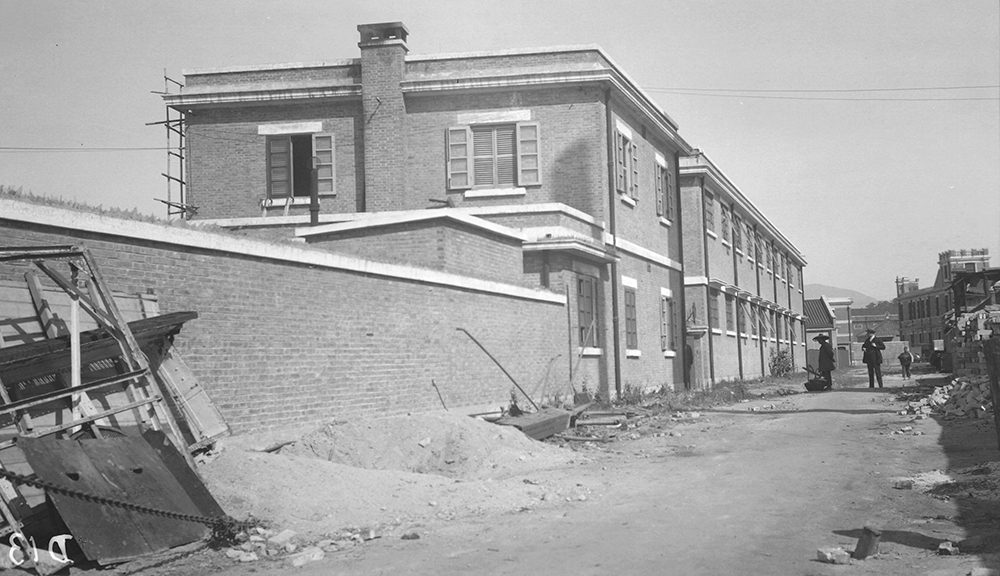
North Point Store, Hong Kong, 1919-1920. Photograph by G. Warren Swire. HPC ref: Sw04-017. © 2007 John Swire & Sons Ltd.
Inside everything looks very clean and tidy:
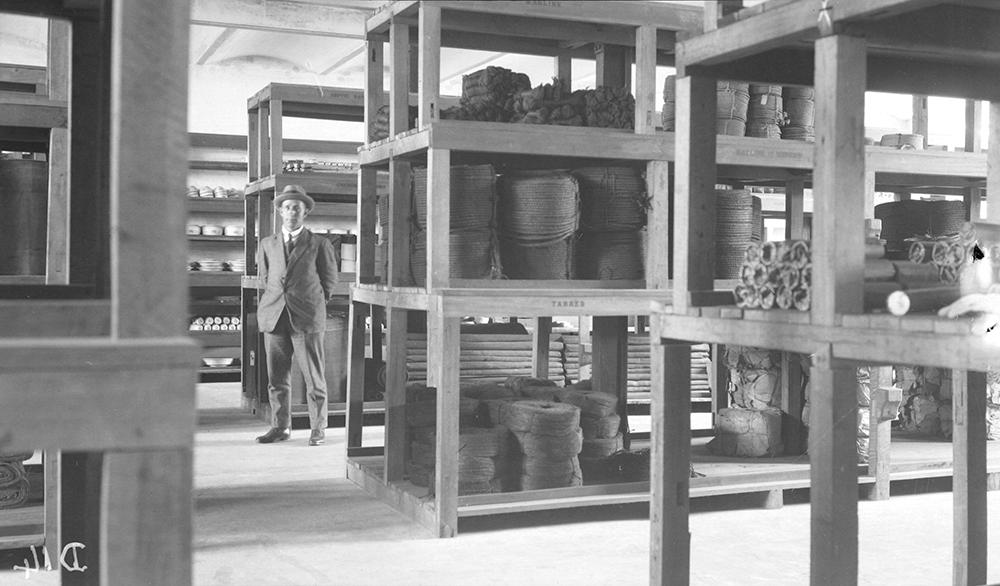
North Point Store, Hong Kong, 1919-1920. Photograph by G. Warren Swire. HPC ref: Sw04-019. © 2007 John Swire & Sons Ltd.
Not so clean and tidy outside though, as it was where they kept the company’s coal:
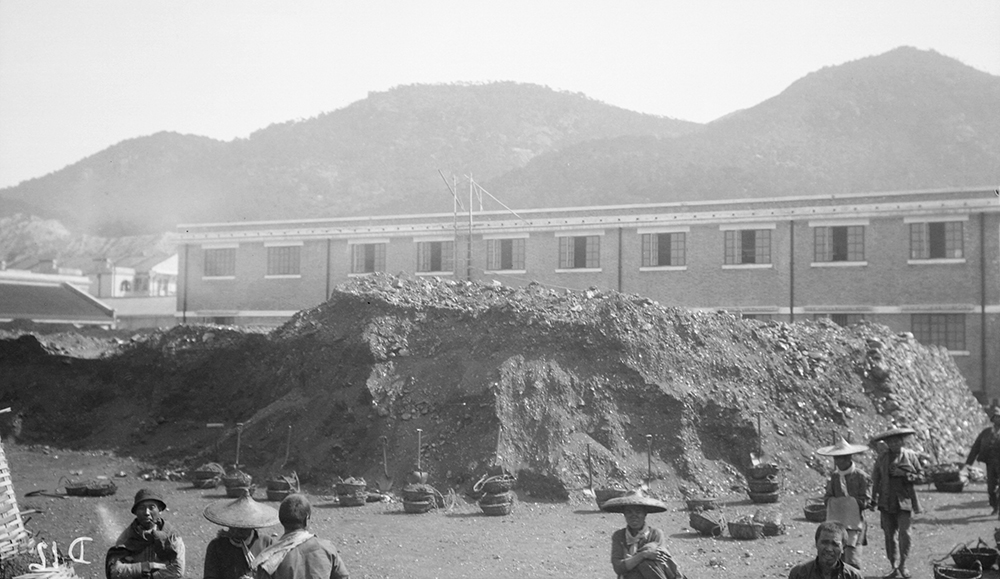
Coal heap, North Point Store, Hong Kong, 1919-1920. Photograph by G. Warren Swire. HPC ref: Sw04-015. © 2007 John Swire & Sons Ltd.
At least some of that coal would end up here at the “TD& E. Co Gas Plant & Power House”:
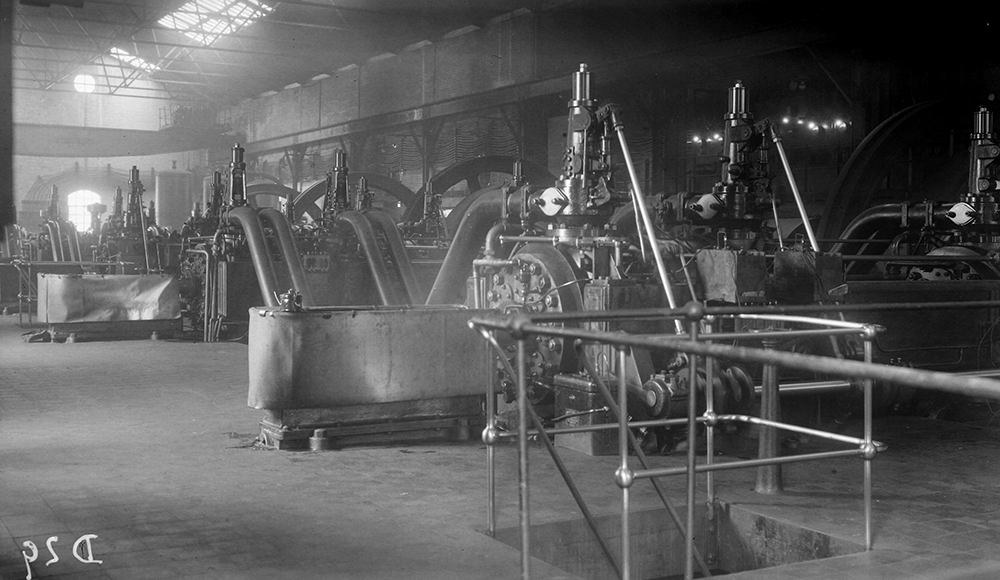
Taikoo Dockyard and Engineering Company Gas Plant and Power House, Hong Kong, 1919-1920. Photograph by G. Warren Swire. HPC ref: Sw04-043. © 2007 John Swire & Sons Ltd.
We take the supply of electricity for granted now, but in 1920 you would find major operations like Taikoo, the Tramways, or the Naval Dockyard each ran their own power station. The Taikoo companies also had to maintain their own water supplies, and built several dams around the area. Most were in the valley behind Quarry Bay but there was also Braemar Reservoir, further west on the hillside above North Point. Here’s Warren looking out across Braemar Reservoir towards Kowloon.
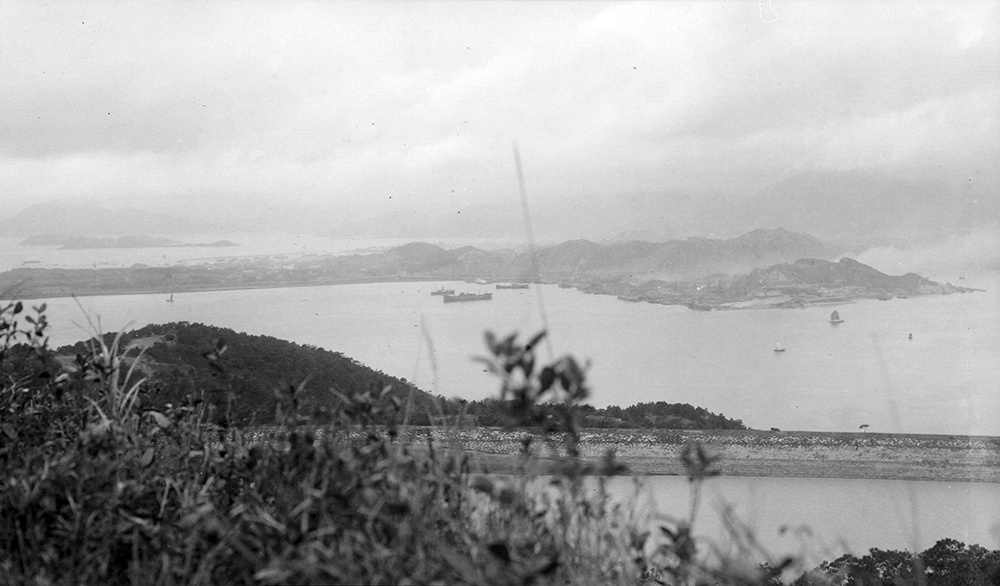
Braemar Reservoir and Kowloon, Hong Kong, 1919-1920. Photograph by G. Warren Swire. HPC ref: Sw18-108. © 2007 John Swire & Sons Ltd.
Holts Wharf
The southern tip of Kowloon, just out of sight on the left of the previous photo, was a regular destination for Swire. He was heading to Holt’s Wharf:
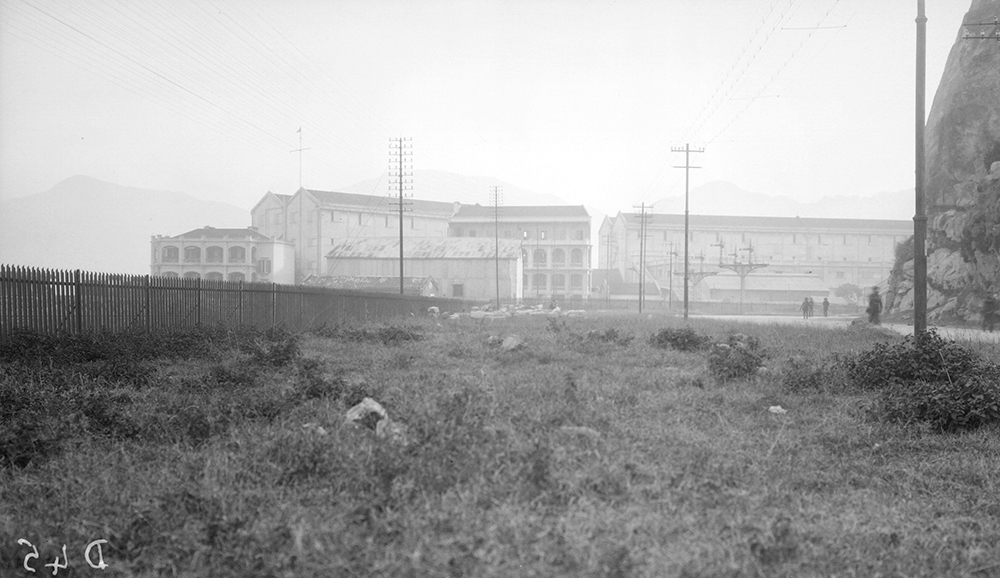
Holts Wharf back, Hong Kong, 1919-1920. Photograph by G. Warren Swire. HPC ref: Sw04-067. © 2007 John Swire & Sons Ltd.
In the view above Swire is looking south towards the Holt’s Wharf buildings. The steep hill on the right is still there today, with Chatham Road running round its base. On the left, behind the fence, is the Kowloon-Canton Railway, heading towards its terminus at Tsim Sha Tsui. The railway is clearer to see in the view below, facing the opposite direction, and taken from a rooftop at the Wharf.
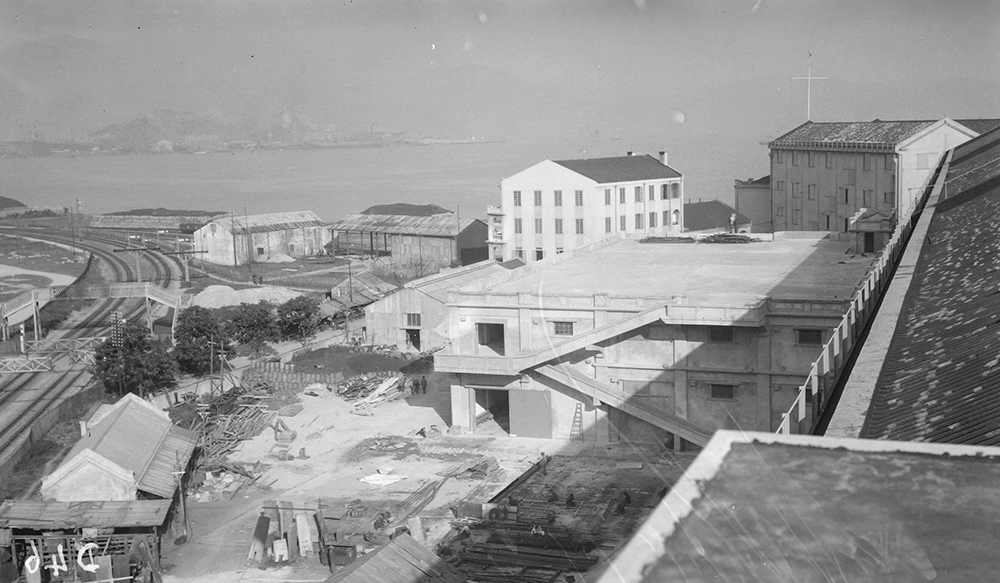
Holts Wharf No. 6, Hong Kong, 1919-1920. Photograph by G. Warren Swire. HPC ref: Sw04-068. © 2007 John Swire & Sons Ltd.
Swire also took a photo that he titled “Holts Wharf Foreign Quarters”.
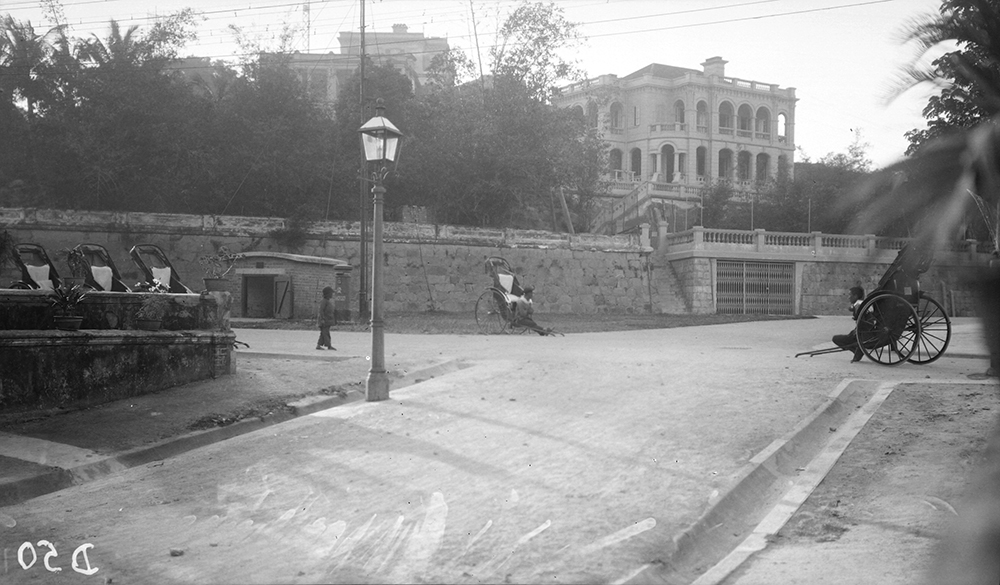
Foreigners’ houses and rickshaws, Holts Wharf, Hong Kong, 1919-1920. Photograph by G. Warren Swire. HPC ref: Sw04-073. © 2007 John Swire & Sons Ltd.
I do not recognize this building, but the Juror’s List gives one possibility. It notes the Wharf Manager was a Mr Charles Butler Riggs, living at Glenthoral on Kimberley Road in Tsim Sha Tsui.
The University of Hong Kong
Returning to the island, Warren checked how the finished University of Hong Kong looked. Swires were one of the donors that helped fund the construction, but when he had taken photographs on his previous visit the Main Building was still under construction. By 1920 it was all finished. Well, almost – it would be another ten years before a clock was finally installed in that clocktower!
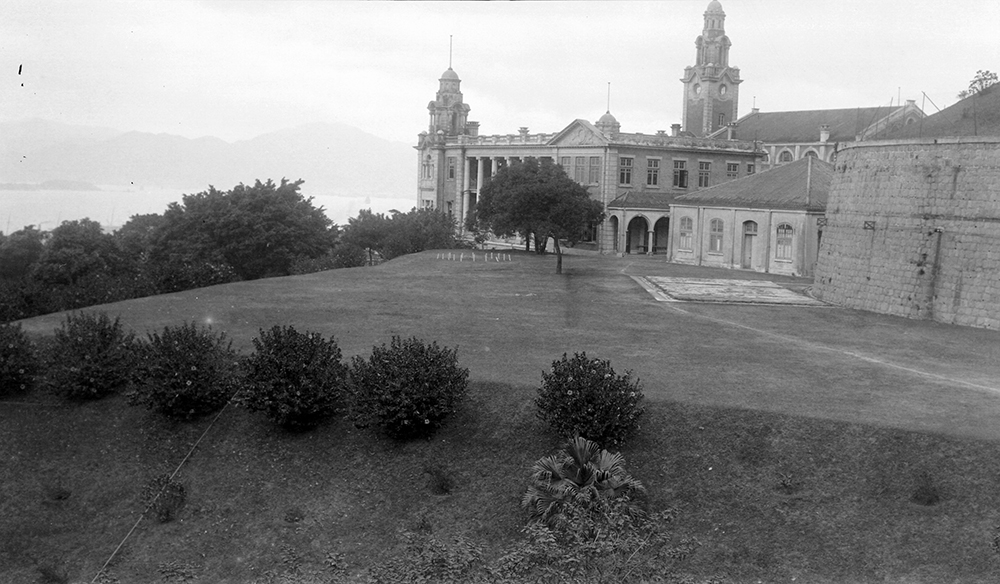
University of Hong Kong, 1919-1920. Photograph by G. Warren Swire. HPC ref: Sw18-107. © 2007 John Swire & Sons Ltd.
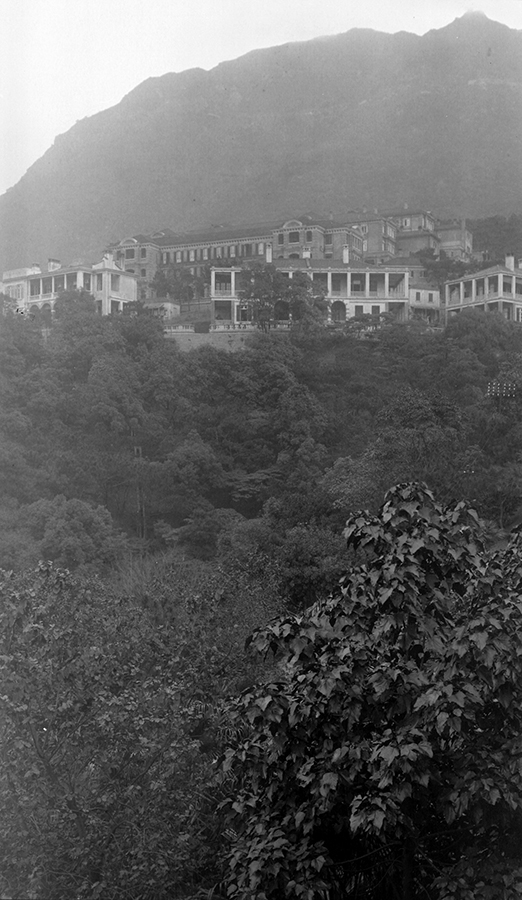
Halls of Residence, University of Hong Kong, 1919-1920. Photograph by G. Warren Swire. HPC ref: Sw18-106. © 2007 John Swire & Sons Ltd.
All those students need somewhere to live. This photo shows the three halls of residence, Lugard, Eliot, and May Halls, on the eastern slopes of the campus. Only May and Eliot are still standing today.
Leisure
Finally, it wasn’t all work. Swire’s last photograph shows a visit to the race track in Happy Valley. His visits were timed to catch the winter months, and from the way people were wrapped up this must have been the coldest day of the year!
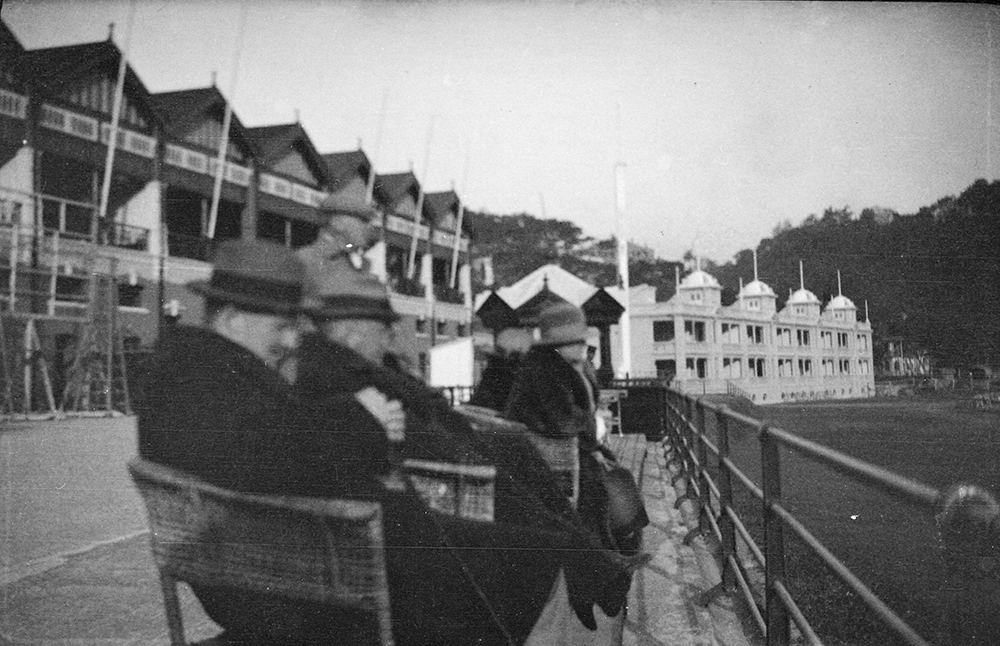
Hong Kong Race-course, Happy Valley, Hong Kong, 1919-1920. Photograph by G. Warren Swire. HPC ref: Sw26-077. © 2007 John Swire & Sons Ltd.
Photographs from Warren Swire’s earlier visits to Hong Kong can be seen at: http://gwulo.com/node/31140 and http://gwulo.com/node/32554
The full Warren Swire Collection covers the first four decades of the twentieth century, and can be viewed online at: http://hpc.vcea.net/Collection/Warren_Swire_Images

